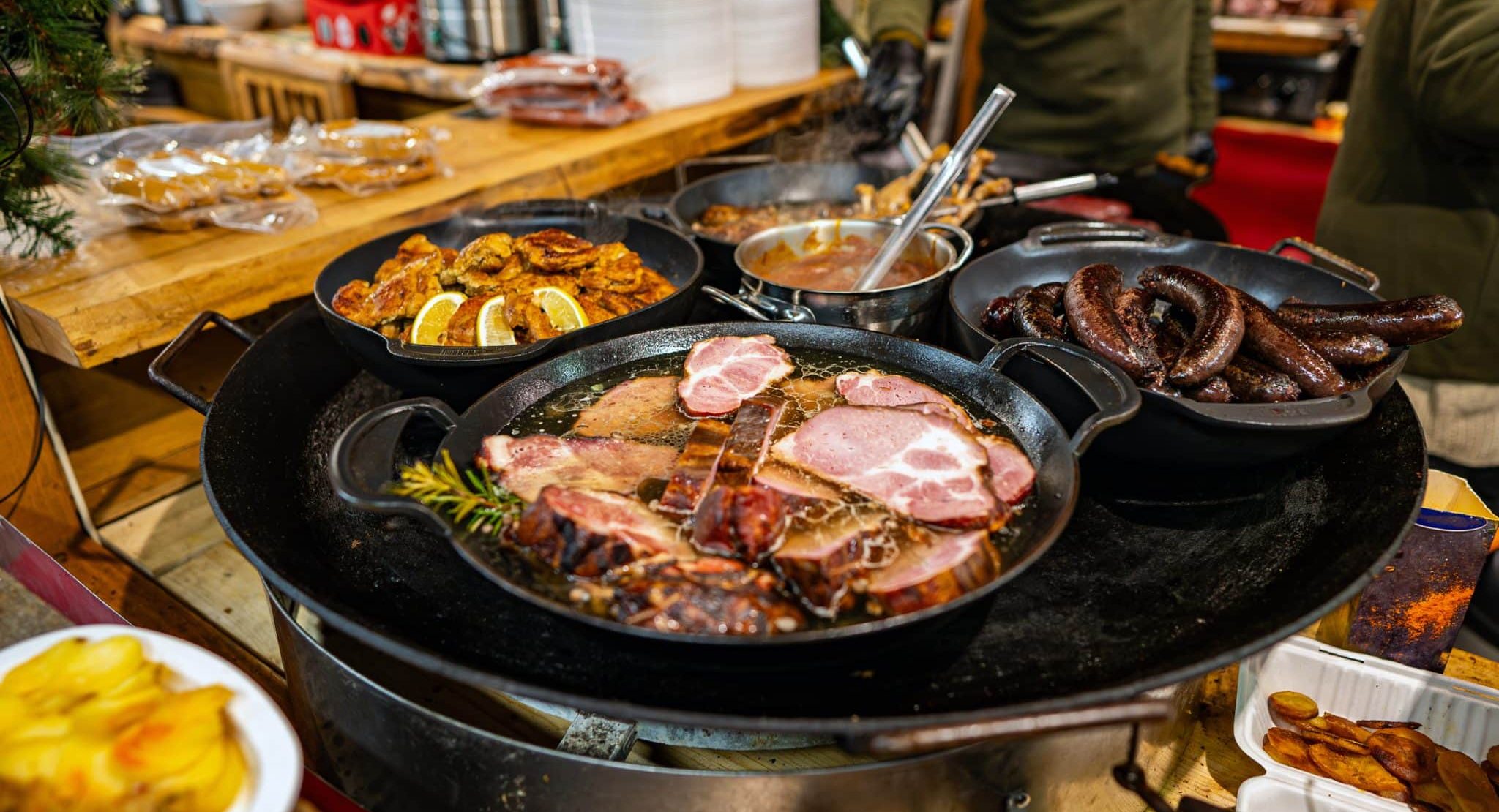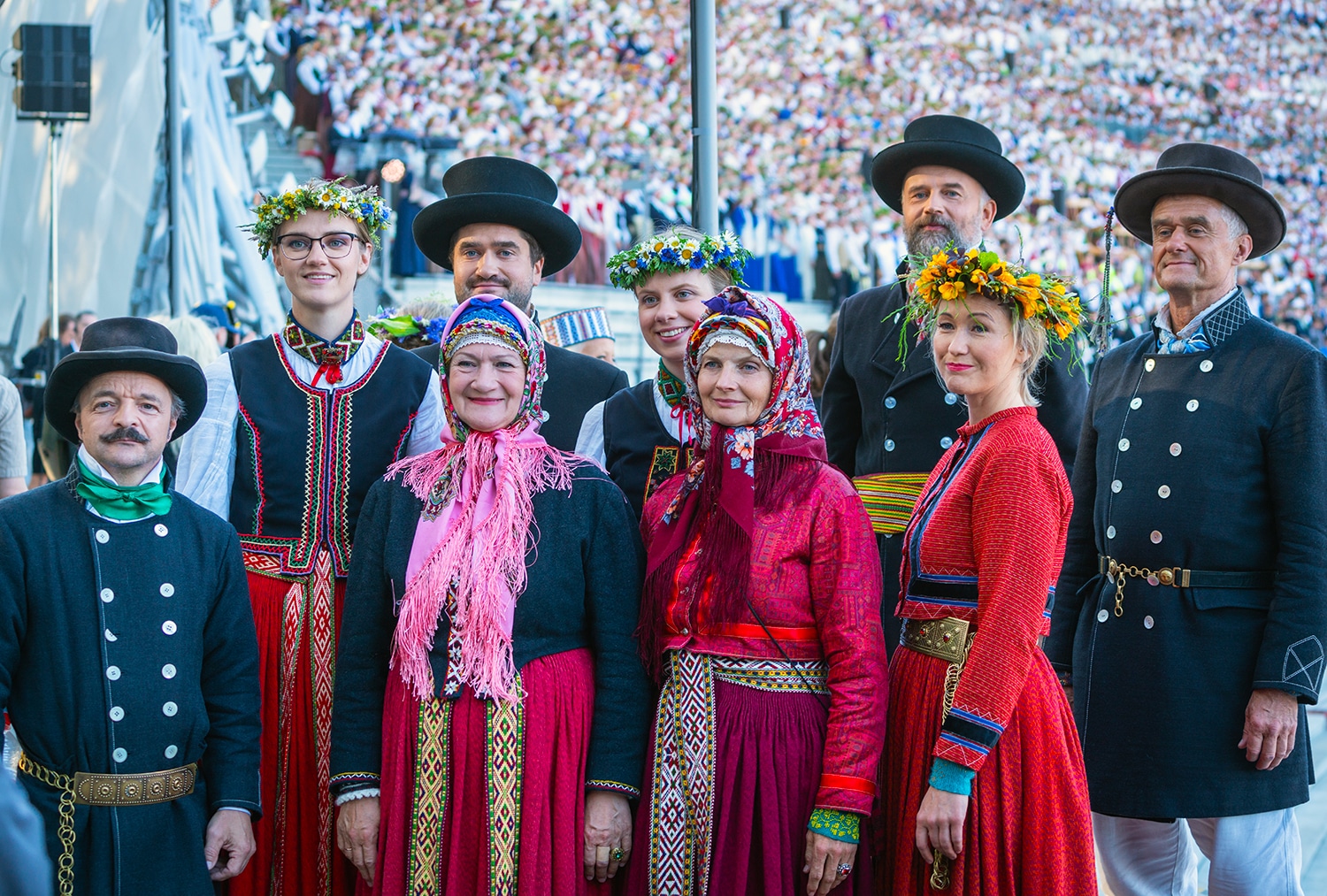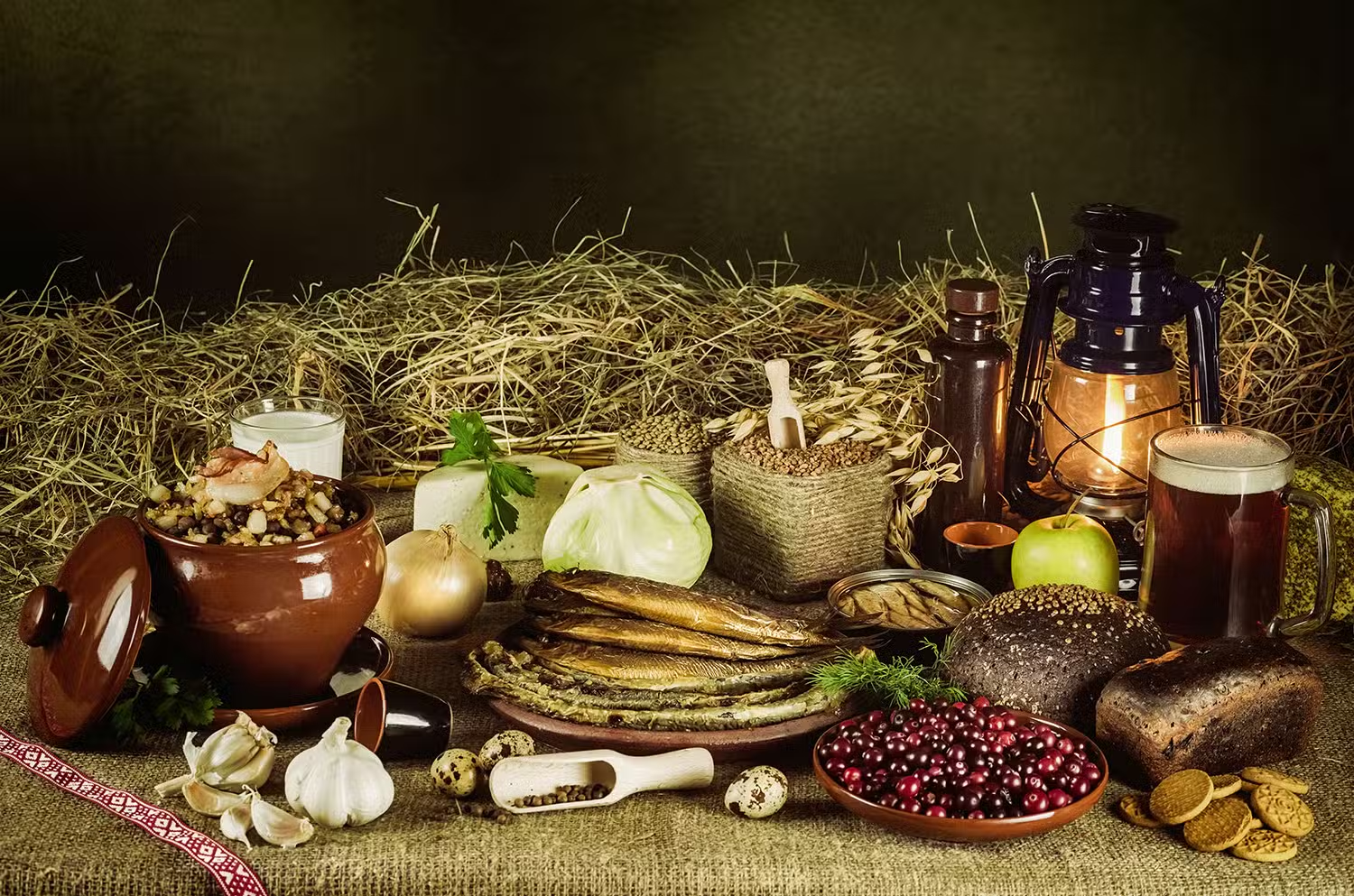The Talking Phrasebook Series presents useful phrases and words in side-by-side translation and with audio files specifically geared to help students work on listening skills and pronunciation. Below, you will find several useful phrases and words. To the left is the English and to the far right is the Estonian translation.
In the center column for each row is a play button. The recorded file will feature first English, then the Estonian in three versions: one slow, one with each syllable broken out, and a last version that will be spoken as it might be overheard in a conversation between native speakers.
For more about Estonian culture, access our full Estonian archives here.
10 Facts about Estonian
Speakers: Estonian is spoken by about 1.2 million people worldwide, with the vast majority (~922,000) in Estonia. Significant diaspora communities live in bordering Finland (~70,000), as well as the United States (~28,000), Sweden (~28,000), Canada (~24,000), and smaller groups in the UK, Russia, Australia, Germany, Norway, and Ireland.
Status: Estonian belongs to the Finnic branch of the Uralic language family. Its closest relative is Finnish, though the two are not mutually intelligible, and it shares very distant ties with Hungarian. This means that Estonian is not related to most other European languages.
Phonology: Estonian is famous for its three lengths of vowels and consonants: short, long, and overlong. This “three-way quantity distinction” is extremely rare in world languages and can change word meanings. For example:
- lina (“linen”) vs. linna (“to the city”) vs. linnā (overlong, “of the city”).
- sada (“hundred”), saada (“to get”), saadā (overlong, “to send”).
Cases: Estonian grammar uses 14 cases for nouns, pronouns, and adjectives. This is also considerably more than most European languages. These cases are nominative, genitive, partitive, illative, inessive, elative, allative, adessive, ablative, translative, terminative, essive, abessive, and comitative. They cover meanings English often expresses with prepositions.
Prepositions and Postpositions: Estonian uses both. Prepositions, such as enne jõule (“before Christmas”) or läbi metsa (“through the forest”), occur less frequently. Postpositions are far more common, such as laua peal (“on the table”), silla all (“under the bridge”), or linna lähedal (“near the city”).
Respect: Estonian expresses respect through the use of formal vs. informal pronouns. The singular informal “you” is sina, while the plural teie also serves as a polite singular, much like French vous. Verbs take different forms for the different “you” forms. In writing, Teie is often capitalized when used as a formal address. Honorifics include härra (“Mr.”), proua (“Mrs.”), and preili (“Miss”).
Gender: Estonian does not have grammatical gender. Nouns, adjectives, and pronouns do not change by gender, and the third-person pronoun tema (or the shortened form ta) means both “he” and “she.” This makes Estonian fully gender-neutral.
History: The earliest Estonian texts date to the 13th century, but the language was long overshadowed by German, Swedish, and Russian rule. Standard Estonian emerged in the 19th century during the national awakening, when folklore, poetry, and song festivals solidified the language as a central marker of identity. Today, Estonian is the sole official language of Estonia and a cornerstone of its cultural independence.
Dialects: Estonian has three main dialect groups: North Estonian, Northeastern coastal, and South Estonian. North Estonian dialects form the basis of the standard language and are largely mutually intelligible with each other as well as with Northeastern coastal dialects, which show more divergence in vocabulary and pronunciation. South Estonian, however, stands apart: varieties like Võro and Seto differ so much in grammar, phonology, and lexicon that they are often classified as separate languages rather than dialects. Mulgi and Tartu, also in the South, preserve features no longer present in Standard Estonian. Most Estonians can understand each other across dialects, but communication with speakers of South Estonian may be difficult without prior exposure.
The Estonian Alphabet
Alphabet: Estonian uses a Latin-based alphabet with 27 letters, including ä, ö, ü, and õ—the last of which is unique to Estonian. Several letters (c, q, w, x, y) appear mainly in loanwords.
| Letter | Approx. Pronunciation | Example (English reference) |
|---|---|---|
| A a | /a/ as in car | auto (“car”) |
| B b | /b/ as in bat | banaan (“banana”) |
| D d | /d/ as in dog | dinosaurus (“dinosaur”) |
| E e | /e/ like met or bed | ema (“mother”) |
| F f | /f/ as in fish (in loanwords) | foto (“photo”) |
| G g | /g/ as in go | garaaž (“garage”) |
| H h | /h/ as in hat | hobi (“hobby”) |
| I i | /i/ as in machine | isa (“father”) |
| J j | /j/ as in yes | juust (“cheese”) |
| K k | /k/ as in cat | kala (“fish”) |
| L l | /l/ as in love | linn (“city”) |
| M m | /m/ as in man | maa (“land”) |
| N n | /n/ as in net | nimi (“name”) |
| O o | /o/ as in more (but shorter) | oma (“own”) |
| P p | /p/ as in pen | pood (“shop”) |
| R r | trilled /r/ (like Spanish perro) | rada (“path”) |
| S s | /s/ as in sun | suur (“big”) |
| Š š | /ʃ/ as in shoe | šokolaad (“chocolate”) |
| Z z | /z/ as in zoo (loanwords) | zebra |
| Ž ž | /ʒ/ as in measure | žanr (“genre”) |
| T t | /t/ as in top | tuba (“room”) |
| U u | /u/ as in boot | uks (“door”) |
| V v | /v/ as in voice | vein (“wine”) |
| Õ õ | unique sound, like a mid-back unrounded vowel (no direct English equivalent, between uh and er) | õlu (“beer”) |
| Ä ä | /æ/ as in cat | hääl (“voice”) |
| Ö ö | /ø/ similar to German ö, French eu in peur | sõber (“friend”) |
| Ü ü | /y/ like German ü, French u in lune | küla (“village”) |
Survival Basics in Estonian
| Hello! | Tere! | |
| Yes | Jah | |
| No | Ei | |
| Good morning! | Tere hommikust! | |
| Good afternoon! | Tere päevast! | |
| Good evening! | Tere õhtust! | |
| What’s up? | Kuidas läheb? | |
| What’s up? | Mis teoksil?
*informal conversation – very friendly way |
|
| How are you? | Kuidas sul läheb? | |
| How are you? | Kuidas (sa) elad? | |
| Good, thanks, and you? | Hästi, aitäh, aga sinul/sul? | |
| Good bye! | Head aega!
*more formal |
|
| Good bye! | Tšau!
*informal conversation – young people, very close friends |
|
| See you later! | Nägemiseni! | |
| Sorry! | Vabandust! | |
| Open/closed | Avatud/suletud | |
| Pull/push | Tõmba/lükka | |
| Small/big | Väike/suur | |
| Do you speak English? | Kas te räägite inglise keelt? | |
| I don’t speak English. | Ma ei räägi inglise keelt. | |
| I only speak a little Estonian. | Ma räägin ainult natuke eesti keelt. | |
| I understand | Ma saan aru. | |
| I don’t understand. | Ma ei saa aru. | |
| Thank you! | Aitäh!
*Note: Tänan! is also often used. See the entry below for “Very well, thanks.” for the pronunciation. |
|
| Thank you very much! | Suur tänu!
*Note: “Suur aitäh!” is also often used. See the entry above for “Thank you” the pronunciation of “aitäh!” |
|
| Very well, thanks! | Väga hästi, tänan!
*Note: “Väga hästi, aitäh!” is also often used. See the entry above for “Thank you” the pronunciation of “aitäh!” |
|
| Well | Hästi | |
| Poor | Kehv | |
| Good | Hea | |
| Bad | Halb | |
| Please | Palun | |
| You’re welcome! | Võta heaks!
*more formal |
|
| You’re welcome! | Palun!
*less formal |
|
| Excuse me! | Palun vabandust! | |
| Excuse me! | Vabandage! | |
| A little | Natuke | |
| Could you speak more slowly? | Kas te võiksite aeglasemalt rääkida? | |
| Could you repeat, please? | Kas te võiksite korrata, palun? | |
| Could you write that down? | Kas te võiksite selle kirja panna? | |
| I would like to make an appointment. | Ma sooviksin aega broneerida. | |
| My bag/wallet/passport was stolen | Mu kott/rahakott/pass on varastatud. | |
| I need a doctor! | Mul on arsti vaja! | |
| Call the police! | Kutsuge politsei! |
Introductions in Estonian
| What is your name? | Mis su nimi on? | |
| Pleased to meet you! | Meeldiv tutvuda! | |
| I am 25 years old. | Ma olen kahekümne viie aastane. | |
| How old are you? | Kui vana te olete? | |
| Where are you from? | Kust te pärit olete? | |
| I am American. | Ma olen ameeriklane. | |
| No, I am from Canada. | Ei, ma olen pärit Kanadast. | |
| She is Australian. | Ta on austraallane. | |
| He is Irish. | Ta on iirlane. | |
| We are from New Zealand. | Me oleme pärit Uus Meremaalt. | |
| They are from Wales. | Nad on Walesist. | |
| How do you like Estonia? | Kuidas teile Eesti meeldib? | |
| I like Estonia very much. | Mulle meeldib Eesti väga. | |
| Have you ever been to Tartu? | Kas te olete Tartus käinud? | |
| I have never been to Narva. | Ma ei ole kunagi Narvas käinud. *Note: This can also be said as “Ma pole kunagi Narvas käinud.” depending on how the negation is created. |
|
| This is my second time in Estonia. | Ma olen teist korda Eestis. | |
| What do you do? | Kellena te töötate? | |
| I am a doctor | Ma töötan arstina. | |
| I am a teacher | Ma töötan õpetajana. | |
| I am a businessman | Ma töötan ärimehena. | |
| I am a student. | Ma olen õpilane. | |
| I am on vacation. | Ma olen puhkusel. | |
| I am on vacation. | Mul on vaheaeg.
*If you are a student on break |
|
| I am here on business. | Ma olen siin äriasjus. | |
| I am studying here. | Ma õpin siin. |
Asking Directions
| Where are the toilets? | Kus on tualett? | |
| Men | Mehed | |
| Women | Naised | |
| Where is the nearest bank? | Kus asub lähim pank? | |
| Where is the nearest post office? | Kus asub lähim postkontor? | |
| Where is the nearest train station? | Kus asub lähim raudteejaam? | |
| Where can I find Wi-Fi? | Kus ma Wi-Figa ühendust saan? | |
| Do you know the Wi-Fi password? | Kas te teate Wi-Fi parooli? | |
| How can I order a taxi? | Kuidas ma taksot tellida saan? | |
| Straight ahead! | Otse edasi! | |
| Take a right! | Pöörake paremale! | |
| Take a left! | Pöörake vasakule! | |
| After the stoplight | Pärast valgusfoori | |
| Next/First/Last | Järgmine Esimene Viimane |
Shopping
| How much does that cost? | Kui palju see maksab? | |
| The menu, please! | Kas ma võiksin, palun, menüüd näha? | |
| I’d like a beer, please | Ma soovin õlut, palun. | |
| I’d like the bill, please. | Ma soovin arvet, palun. | |
| Do you accept credit cards? | Kas krediitkaardiga saab maksta? |
Counting
| 0 | null | |
| 1 | üks | |
| 2 | kaks | |
| 3 | kolm | |
| 4 | neli | |
| 5 | viis | |
| 6 | kuus | |
| 7 | seitse | |
| 8 | kaheksa | |
| 9 | üheksa | |
| 10 | kümme | |
| 11 | üksteist | |
| 12 | kaksteist | |
| 13 | kolmteist | |
| 14 | neliteist | |
| 15 | viisteist | |
| 16 | kuusteist | |
| 17 | seitseteist | |
| 18 | kaheksateist | |
| 19 | üheksateist | |
| 20 | kakskümmend | |
| 21 | kakskümmend üks | |
| 22 | kakskümmend kaks | |
| 30 | kolmkümmend | |
| 40 | nelikümmend | |
| 50 | viiskümmend | |
| 60 | kuuskümmend | |
| 70 | seitsekümmend | |
| 80 | kaheksakümmend | |
| 90 | üheksakümmend | |
| 100 | sada | |
| 111 | sada üksteist | |
| 125 | sada kakskümmend viis | |
| 200 | kakssada | |
| 300 | kolmsada | |
| 400 | nelisada | |
| 500 | viissada | |
| 600 | kuussada | |
| 700 | seitsesada | |
| 800 | kaheksasada | |
| 900 | üheksasada | |
| 1000 | tuhat |
More About the Uzbek

The Estonian Food Dictionary
Estonian food shares many similarities with other Baltic states and has additional influences from Finnish, German, and Russian cuisine. The Estonian climate significantly impacts domestic agriculture, although greenhouses allow some items to be grown during otherwise inhospitable weather conditions. Nevertheless, most fruits and many vegetables eaten today are imported. Most traditional are root vegetables such […]

Latvian Holidays 2026: A Complete Guide
Latvian holidays are steeped in ancient pagan tradition. Most important are the winter and summer solstices. Connections with the ancient past are thought to be the most authentic connections with being Latvian. Other major holidays celebrate the hard-won independence and sovereignty of Latvia. Soviet influence, especially as compared to other former Soviet republics, is minimal, […]

Jewish Latvia: A Brief History and Guide
This guide offers advice to Jewish students considering study abroad programs in Latvia. Here, you’ll read about the local Jewish history, Latvia’s active synagogues, staying kosher, and about some of Riga’s major Jewish cultural organizations, museums, and memorials. Most importantly, we’ll get you on your way to engaging with the local Jewish community and comfortably […]

The Talking Latvian Phrasebook
The Talking Phrasebook Series presents useful phrases and words in side-by-side translation and with audio files specifically geared to help students work on listening skills and pronunciation. Below, you will find several useful phrases and words. To the left is the English and to the far right is the Latvian translation. In the center column […]

Dictionary of Latvian Food
Latvian cuisine shows strong influence from German, Scandinavian, and Slavic sources. It also has many fundamentally Latvian traditions that are often overlooked by outsiders but which are deeply cherished locally. Latvian cuisine is heavy on pork, potatoes, fermented dairy, and pickled vegetables. Herring and lampreys from the Baltic Sea and local rivers provide delicacies that […]
More Phrasebooks

The Talking Romanian (in Moldova) Phrasebook
The Talking Phrasebook Series presents useful phrases and words in side-by-side translation and with audio files specifically geared to help students work on listening skills and pronunciation. Below, you will find several useful phrases and words. To the left is the English and to the far right is the Romanian translation. In the center column […]

The Talking Turkish Phrasebook
The Talking Phrasebook Series presents useful phrases and words in side-by-side translation and with audio files specifically geared to help students work on listening skills and pronunciation. Below, you will find several useful phrases and words. To the left is the English and to the far right is the Turkish translation. In the center column for […]

The Talking Estonian Phrasebook
The Talking Phrasebook Series presents useful phrases and words in side-by-side translation and with audio files specifically geared to help students work on listening skills and pronunciation. Below, you will find several useful phrases and words. To the left is the English and to the far right is the Estonian translation. In the center column […]




